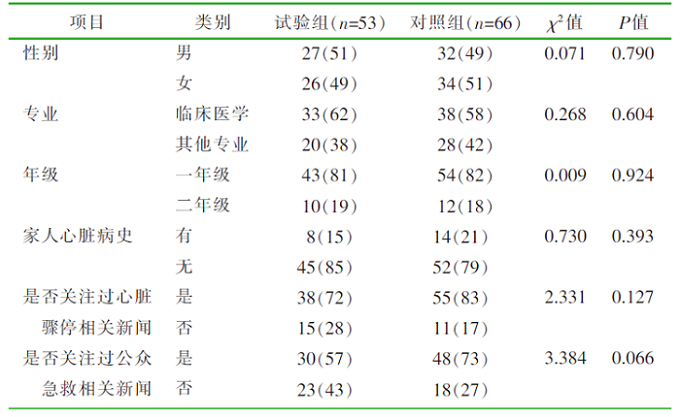| [1] |
Kiguchi T, Okubo M, Nishiyama C,et al. Out-of-hospital cardiac arrest across the world:first report from the International Liaison Committee on Resuscitation(ILCOR)[J]. Resuscitation, 2020,152:39-49.
|
| [2] |
蔡文伟, 李恒杰. 全球复苏联盟提高院外心脏骤停生存率的十项举措[J]. 中华急诊医学杂志, 2021, 30(1):12-14.
|
| [3] |
中国红十字基金会. 红十字救在身边,应急救护一体机正式亮相[EB/OL]. [2021-05-06]. https://www.crcf.org.cn/article/21333
|
| [4] |
Xu F, Zhang Y, Chen YG. Cardiopulmonary resuscitation training in China:current situation and future development[J]. JAMA Cardiol, 2017, 2(5):469-470.
doi: 10.1001/jamacardio.2017.0035
|
| [5] |
马文君. 全国心肺复苏普及进亿家精准健康工程启动[J]. 解放军医学杂志, 2017, 42(2):139.
|
| [6] |
Heard CL, Pearce JM, Rogers MB. Mapping the public first-aid training landscape:a scoping review[J]. Disasters, 2020, 44(1):205-228.
doi: 10.1111/disa.12406
|
| [7] |
Merchant RM, Topjian AA, Panchal AR,et al. 2020 Part 1:executive summary:2020 American Heart Association guidelines for cardiopulmonary resuscitation and emergency cardiovascular care[J]. Circulation,2020, 142(16_suppl_2):S337-S357.
|
| [8] |
Greif R, Bhanji F, Bigham BL, et al. Education,implementation,and teams:2020 international consensus on cardiopulmonary resuscitation and emergency cardiovascular care science with treatment recommendations[J]. Circulation,2020, 142(16_suppl_1):S222-S283.
|
| [9] |
Womelsdorf T, Thomas C, Neumann A,et al. A Kiosk Station for the assessment of multiple cognitive domains and cognitive enrichment of monkeys[J]. Front Behav Neurosci, 2021,15:721069.
|
| [10] |
Peberdy MA, Silver A, Ornato JP. Effect of caregiver gender,age,and feedback prompts on chest compression rate and depth[J]. Resuscitation, 2009, 80(10):1169-1174.
doi: 10.1016/j.resuscitation.2009.07.003
pmid: 19674826
|
| [11] |
Meaney PA, Bobrow BJ, Mancini ME,et al. Cardiopulmonary resuscitation quality:improving cardiac resuscitation outcomes both inside and outside the hospital:a consensus statement from the American Heart Association[J]. Circulation, 2013, 128(4):417-435.
doi: 10.1161/CIR.0b013e31829d8654
pmid: 23801105
|
| [12] |
中国红十字会总会, 教育部. 中国红十字会总会教育部关于进一步加强和改进新时代学校红十字工作的通知[J]. 中华人民共和国教育部公报, 2020(S2):13-14.
|
| [13] |
Chang MP, Gent LM, Sweet M,et al. A novel educational outreach approach to teach Hands-Only Cardiopulmonary Resuscitation to the public[J]. Resuscitation, 2017,116:22-26.
|
| [14] |
Heard DG, Andresen KH, Guthmiller KM,et al. Hands-only cardiopulmonary resuscitation education:a comparison of on-screen with compression feedback,classroom,and video education[J]. Ann Emerg Med, 2019, 73(6):599-609.
doi: 10.1016/j.annemergmed.2018.09.026
|






